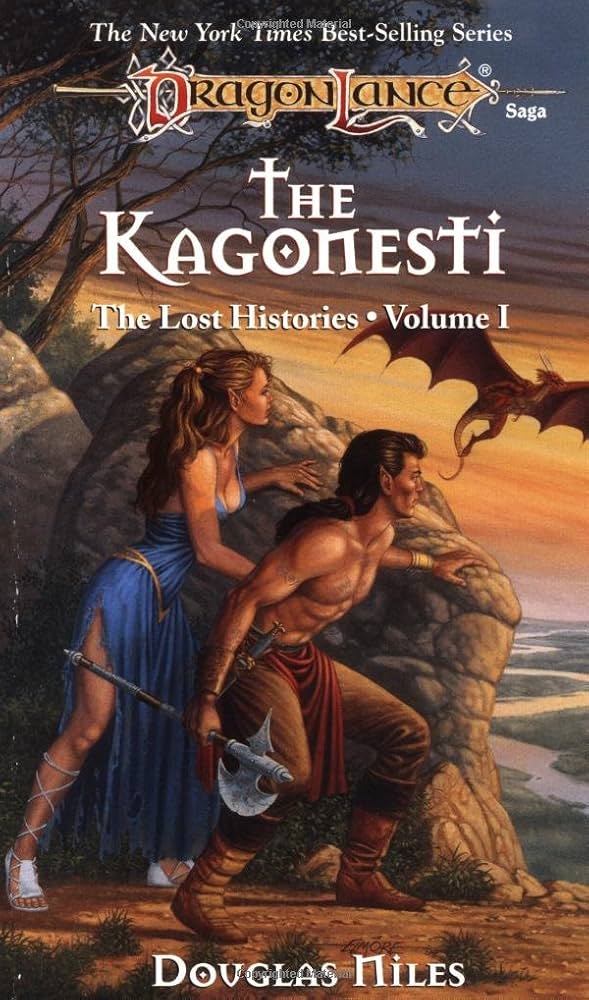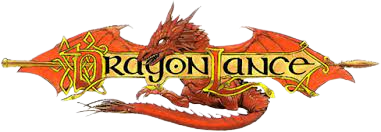The Kagonesti

Table of Contents
ToggleOverview
The Kagonesti tells the deeply moving and often tragic story of Krynn’s wild elves, known as the Kagonesti. Frequently dismissed or stereotyped as primitive and uncultured by their more refined cousins (the Silvanesti and Qualinesti), this novel sets out to correct that perception, chronicling their long, painful history from noble independence to forced servitude, and ultimately, to rebellion and reclamation of identity.
Told across generations, the book is both a cultural history and a personal saga, full of hardship, beauty, and quiet heroism. It is one of the most soulful and serious entries in the Lost Histories series, and an essential read for understanding elven politics, prejudice, and resistance in Krynn.
Main Character: Miral
- A Kagonesti woman from a noble tribal lineage, Miral becomes the spiritual and emotional core of the novel.
- Strong, proud, and resilient, she endures enslavement, loss, and cultural humiliation, while never letting go of her identity.
- Her arc is a powerful story of survival, motherhood, and resistance, and mirrors the broader journey of her people.
Key Supporting Characters
- Kethrenan – A Silvanesti noble who initially treats the Kagonesti as inferiors but slowly comes to respect and understand their ways.
- Calaron – Miral’s son, whose upbringing between two worlds becomes a key point of tension and transformation in the story.
- The Silvanesti and Qualinesti Elves – Often portrayed here as oppressors, either through arrogant “civilizing” efforts or direct enslavement.
Setting
- Spanning centuries, the novel takes place in the forests, valleys, and mountain regions of southern Ansalon, particularly where the Kagonesti once lived freely.
- Shifts between untouched wilderness and the structured, formal courts of the “civilized” elves, emphasizing the disconnect between the two cultures.
- Later sections depict colonized or enslaved Kagonesti settlements, adding weight to the emotional and political stakes.
Plot Summary
The Free People
The novel opens in an age before the Cataclysm, when the Kagonesti live in harmony with the land, guided by tribal wisdom and spiritual traditions. They are strong, proud, and free.
But as the Silvanesti Empire expands, they begin to see the Kagonesti as savages—uncultured cousins who must be “guided” or ruled. Under the guise of civilization, the Silvanesti begin efforts to subjugate and assimilate them.
Enslavement and Resistance
Miral, a leader among her people, is captured and enslaved, her tribe torn apart. She is brought to live in Silvanesti society, forced into a role as both servant and object of curiosity.
But even under pressure, she refuses to break—teaching her son Calaron and others the truth of their heritage. Her quiet rebellion begins to inspire others, and she becomes a living symbol of resistance.
Meanwhile, Calaron grows up torn between two worlds: the rigid, refined world of Silvanesti nobility, and the wild heart of the forest he never fully knew.
Cultural Reckoning
As Calaron comes of age, he must choose which legacy to follow. He ultimately embraces his Kagonesti blood, helping to spark a wider movement for freedom and cultural renewal.
Other tribes rise. The Kagonesti reclaim their language, customs, and lands, even as they remain caught between the might of Silvanesti and the political manipulations of the Qualinesti.
Endurance Over Time
The novel closes with the Kagonesti still struggling, but no longer lost. Though much of their past is scarred, they begin to rebuild their communities with a fierce new clarity, guided by ancestral memory and pride.
Miral’s legacy lives on not through grand battles, but through preserved culture and identity, and the quiet power of remembering who you are.
Themes
- Cultural Erasure and Resistance – The heart of the novel is about how powerful societies erase or rewrite the history of the marginalized—and how memory becomes a weapon against that.
- Pride in Identity – The Kagonesti are seen as lesser, but the story asserts that their strength lies in what others dismiss: connection to the land, tradition, and each other.
- Motherhood and Legacy – Miral’s role as mother, mentor, and symbol makes her one of the most powerful female figures in Dragonlance.
- Colonialism and “Civilization” – The novel critiques the Silvanesti and Qualinesti imperial attitudes, drawing clear parallels to real-world imperialism and forced assimilation.
- Survival Without Conquest – The Kagonesti win not by war, but by refusing to vanish—by existing, enduring, and teaching the next generation.
Tone & Style
- Somber, powerful, and deeply emotional, with lyrical descriptions of forest life and biting critique of elven politics.
- Character-driven, with a strong focus on relationships, oral history, and generational impact.
- Feels like a blend of folktale, history, and tragedy, with flashes of hope and resilience.
Reception
The Kagonesti is praised for:
- Giving long-overdue voice and dignity to a people typically portrayed as comic or uncultured
- Featuring one of the most emotionally resonant and morally grounded heroines in Dragonlance
- Tackling big, real-world themes like colonialism, racism, and cultural preservation with clarity and care
- Deepening the lore of the elven subraces and showing how not all elves share the same privileges or perspectives
Some readers note:
- A slower, more introspective pace than traditional high-fantasy adventures
- The tone can be dark and heartbreaking, especially during scenes of enslavement and cultural trauma
But for those seeking substance, soul, and history, it’s a standout.
Final Thoughts
The Kagonesti is a beautifully written, courageous tale of a people who refuse to be forgotten. It transforms the so-called “wild elves” into a fully realized culture of strength, sorrow, and spiritual endurance, and tells one of the most important stories in the Dragonlance universe.
Recommended for:
- Readers interested in indigenous allegory, cultural survival, and elven lore
- Fans of character-driven historical fantasy
- Anyone who wants to understand the true heart of the wild elves
“The forest does not forget its people. And neither will they forget who they are.”
